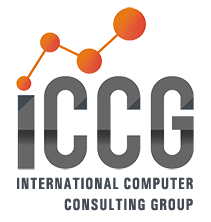The future of planning is connected, intelligent, and continuous. Yet many companies remain so far away from this vision, it often seems unachievable. With many planning processes being so siloed and disconnected from execution, they can feel ineffective.
Fortunately, evaluations of the planning landscape reveal many organizations are adopting technologies that move towards a de-siloed, network-based approach to planning. For these companies, the primary goal centers around connecting planning capabilities to “a single version of the truth.” To optimize planning capabilities, it crucial to achieve this connection at the enterprise level as well as into the broader supply network.
But to do this involves using integrated business planning (IBP) or sales and operations planning (S&OP) to collaborate and analyze, perform demand planning to improve forecasting, optimize supply planning, and facilitate synchronization. Each of these areas are critical to a successful planning process and are more powerful when integrated and connected across a network.
Let’s examine each planning process in more detail:
Integrated Business Planning / Sales & Operations Planning / S&OE
As more real-time data becomes available through the digital supply chain, your company can improve operations with S&OP. The increased visibility gained will indicate challenges, especially any misalignments between actual sales and planned production. S&OP systems are designed to synchronize demand and supply, identify imbalances, and coordinate a resolution across operating functions and business units.
Additionally, S&OP enables your planners and managers to understand key performance indicators before re-planning occurs. As the supply chain becomes de-siloed, planning can be transformed, particularly when utilizing a multi-enterprise business network to connect planning and S&OE processes, allowing for the S&OE to incorporate suppliers’ updated quantities and machine learning-based estimated times of arrival (ETA). By using more current and accurate data, a multi-enterprise business network can help your planners with the most frustrating planning problem - adjusting plans based on current status versus historic data.
Demand Planning
There have been significant improvements developing in-terms of demand planning. Organizations are now able to deploy demand planning solutions capable of calculating statistical forecasts, seamlessly launch new products, manage promotions and seasonality, and even determine safety stock. Increasingly, the use of machine learning (ML) and artificial intelligence (AI) can enhance statistical forecasts beyond what historical forecasting can achieve by up to 10x. The ability to accurately plan based on the specific needs by customer market has been made possible through digitization of demand planning processes.
Supply Planning
The foundation of supply planning is being able to perform both supply and inventory planning to create optimized and constrained plans for capacity, materials, inventory and distribution along with combined replenishment. An improved supply plan leads to reduced and more balanced stocks and an increase in order fulfillment performance. With supply planning, inventory policies can be optimized so that the right products are allocated for the right location.
Production Scheduling
Ensure production scheduling tools synchronize schedules for your entire factory, optimizing sequence based on unique criteria like labor resources, change over times, or cleaning requirements. It’s evident that the systems running the factory must be increasingly integrated, allowing optimization across people, capacity, and product. Production scheduling is often highly specific to a given industry vertical. In any case, the most important capabilities of a production scheduler are constraints around product, people, and equipment.
While the goals of planning process largely remain the same, the desired outcomes are now increasingly available with the right methods and solutions in place. As companies are able to improve the planning processes within the enterprise and across their extended network, the benefits will boost other areas of the supply chain.
And, as always, contact ICCG to help provide you with insight and information. Schedule a complimentary consultation to review your questions.


